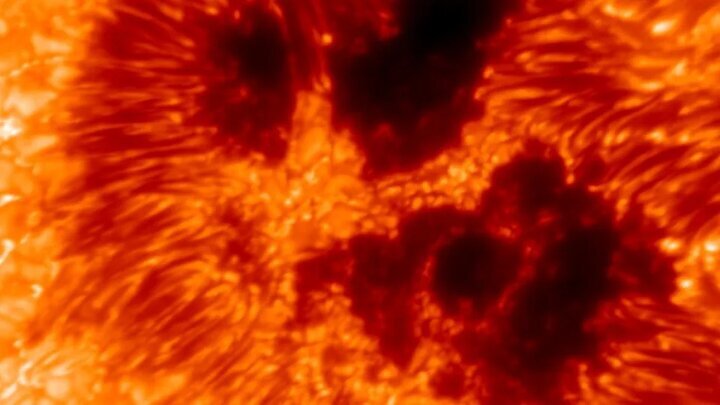This image was first taken by the new visibility adjustable filter, or VTF, of the National Science Foundation’s Daniel K. Inouye Solar Telescope.
According to press television, the instrument can build a three-dimensional view more than ever before about what is happening on the surface of the sun, according to a news release.
The close-up reveals clusters of continent-sized dark solar spots near the center of the atmosphere inside the sun, at a scale of 6.2 miles (10 km) per pixel.
These wounds mark areas of intense magnetic activity that are likely to cause solar flares and coronal mass ejections, or CMEs. Coronal mass emissions are large clouds of plasma and ionized gases called magnetic fields that erupt from the outside air of the sun.
Such detailed images taken in early December provide an important way for scientists to learn and predict potentially dangerous solar climates, according to Friedrich Woeger, the NSF Inouye Solar Telescope Instrument program scientist.
“The solar storms in the 1800s (the Carrington event) were so energetic that it reportedly caused a fire at the telegraph station,” Woger said. “We need to understand the physical drivers of these phenomena and how they affect our technology and ultimately our lives.”
MNA

